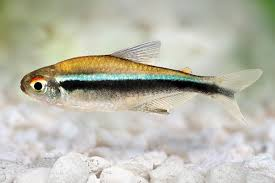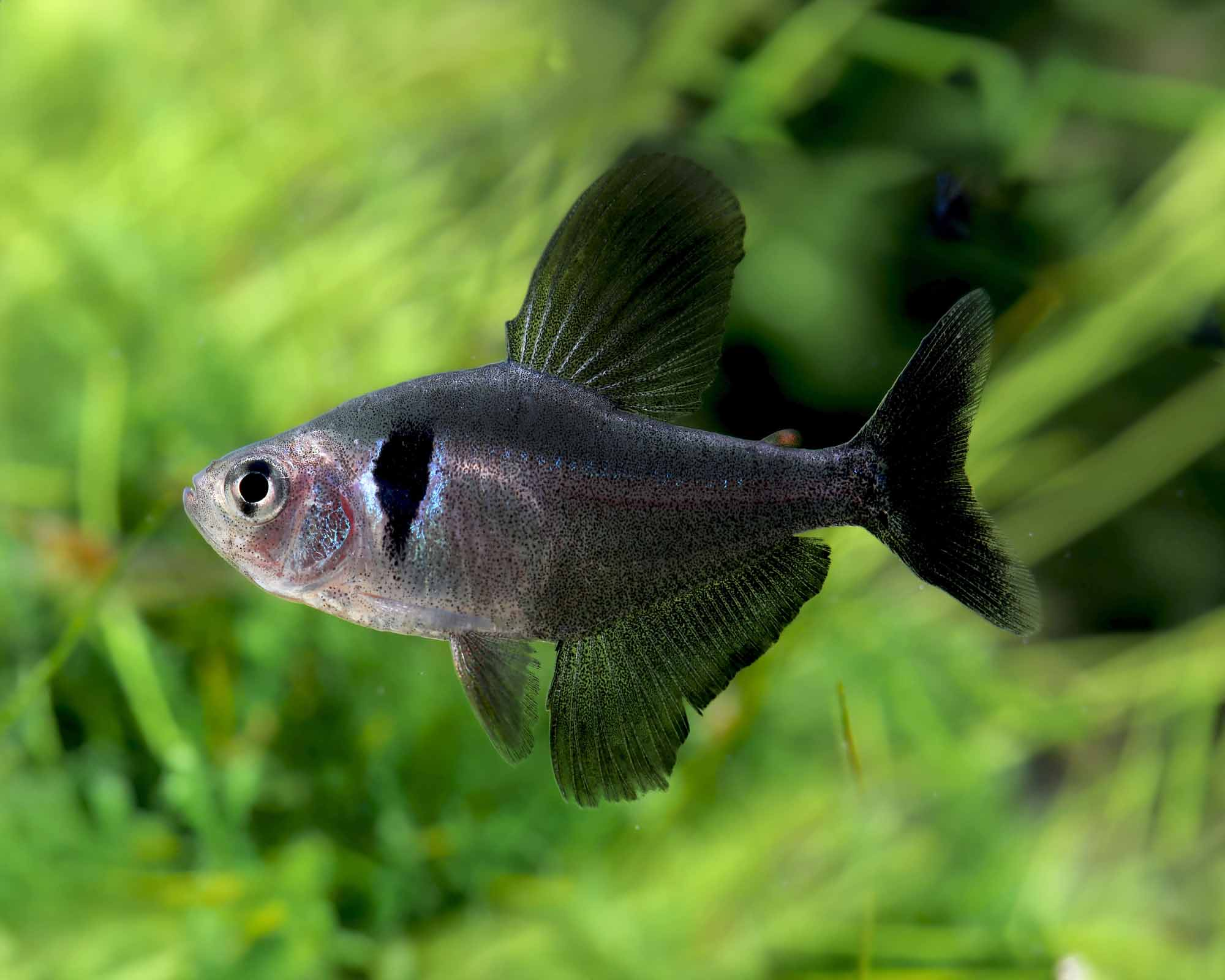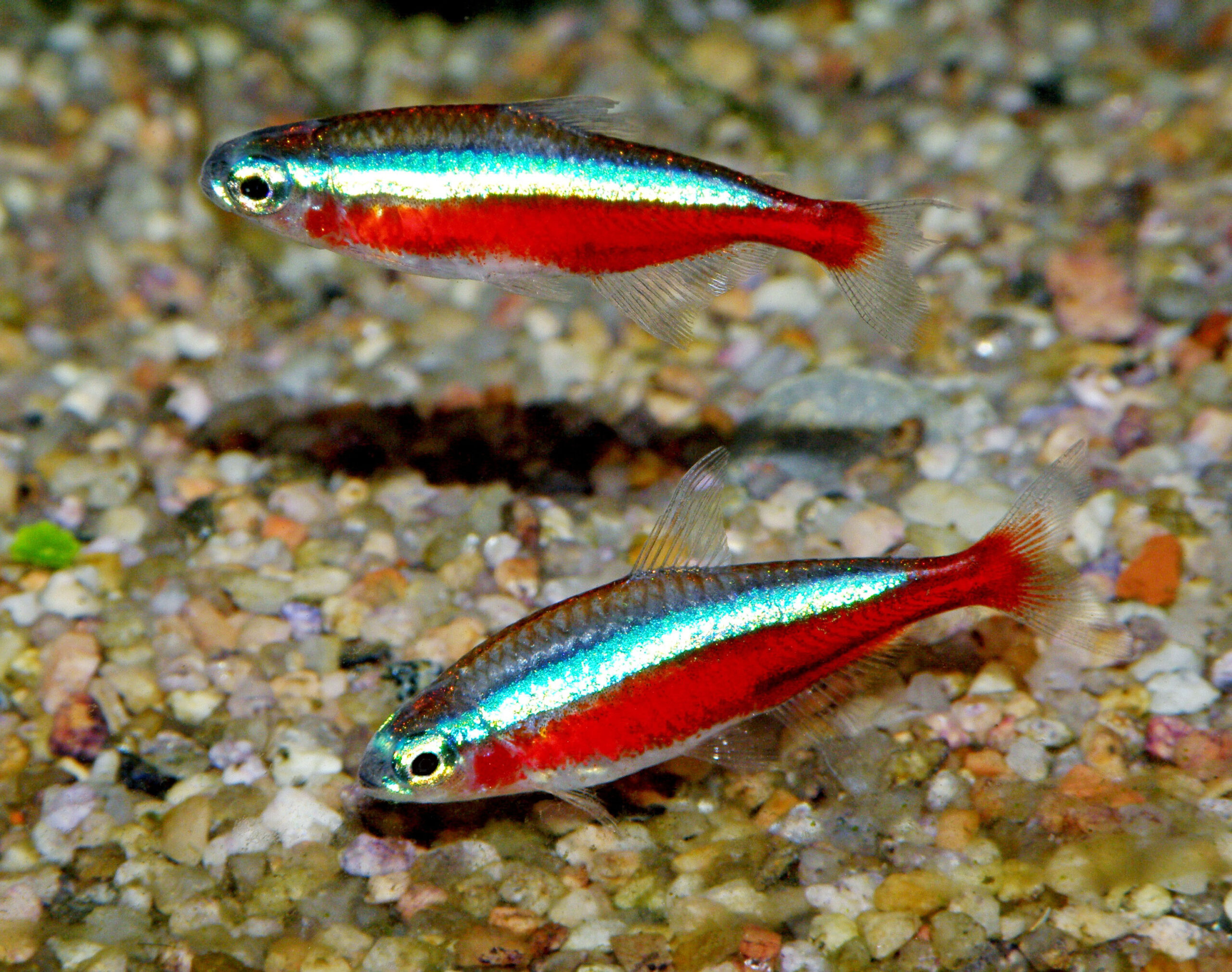Video of Actual Fish
The glowlight tetra’s origins are in the Essequibo Basin in Guyana; they have been found in the Essequibo, Mazaruni, and Potaro Rivers. The river waters of South America are stained by tannins from decaying plant matter, which make the water naturally soft and acidic.
The glowlight tetra is bred in captivity, and commercially bred fish are exported from both Asia and Germany. It was introduced to the aquarium trade in 1933.
Colors and Markings
Peaceful and easy to care for, the glowlight tetra is one of the most popular of all tetras. Small and slender, they reach an adult size of only an inch and a half in length. The translucent, silvery-peach colored body of the glowlight tetra is divided by an iridescent red-gold stripe running from snout to tail. The stripe resembles the glowing filament in a light bulb or glowlight. The same iridescent red color is present on the leading edge of the dorsal fin, while the anal and pelvic fins are edged in white.
The trademark stripe of the glowlight tetra is shared by a species of rasbora, known as the glowlight rasbora (Trigonostigma hengeli), and the two fish are sometimes confused. However, the two species are not from the same family. The most obvious difference between the two is the lack of an adipose fin in the rasbora, and the back half of its body is black.
Tankmates
Glowlight tetras like their own kind; keep them in groups of at least a half-dozen or more. You can also keep them with other small peaceful fish, including other small tetras, barbs, danios, cory catfish, and peaceful loaches. Although they are a schooling fish, they will generally not school together with other species. This is true even with species of similar size and shape, such as the neon and cardinal tetra. Slow-moving fish and fish with long fins are safe with glowlight tetras.
However, avoid angelfish as they eat glowlights. Avoid all large fish, as well as predatory species. Additionally, any fish that are extremely active may prove stressful for the glowlight tetra.
Glowlight Tetra Habitat and Care
Glowlight tetras are most attractive and also most comfortable when kept in a darkened tank. Choose a dark substrate and provide plenty of vegetation, but leave some open space in the center of the tank for swimming. Add tannins to both soften and darken the water, and add floating plants to provide the finishing touch to the perfect glowlight tetra habitat. Glowlight tetras tolerate a wider range of water parameters than similar tetras.
Glowlight Tetra Diet and Feeding
Glowlights are omnivorous so they will eat all types of foods. It’s important to feed small-sized food and to vary the diet. They readily accept flakes, freeze-dried, and frozen foods in addition to live foods. Micro-pellet foods are suitable, as well as any good quality flake food that has been crumbled into small pieces. Frozen or live brine shrimp is readily accepted, too. Glowlight tetras will rarely eat food that has fallen to the bottom, so feed small quantities frequently, as opposed to less frequent large feedings.




Reviews
There are no reviews yet.